Street Photography
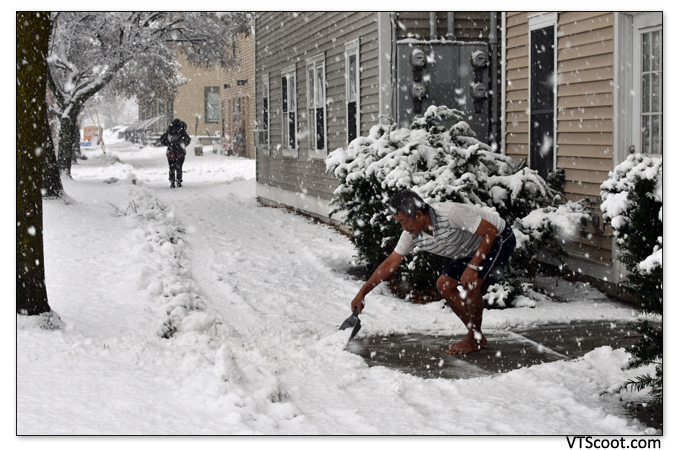
Street photography is not for everyone. Certainly not for the timid. The basic definition of street photography is the art of capturing moments encountered in public places. It’s a candid art, you’re generally shooting strangers as they go about their business, and hopefully creating images that tell a story. Not everyone feels comfortable doing this. Especially in the US where we tend to insulate ourselves as much as we can from other people and the concept of “personal space” is practically fetishized. Taking a stranger’s photo feels invasive, what if they get mad? Am I doing a bad thing? Is it even legal?
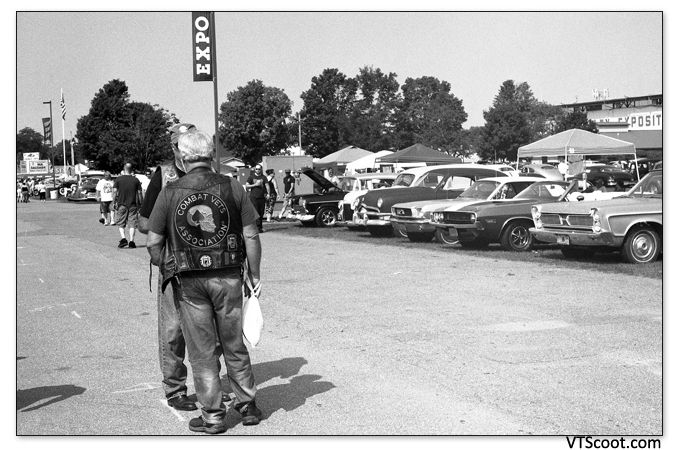
Let’s just tackle that last worry. Is it legal? The answer is of course it is! Ever watch a sporting event and see the camera shoot images of people in the stands? Yes, all the time, by the thousands. Then broadcast on live TV… all without asking each of those people their permission, or getting them to sign a waiver. Ever see people in the background of a local news broadcast? Ever look up at all the cameras on building corners and traffic intersections and see how your picture is being taken every day of your life? Your picture is being taken constantly, if it isn’t, I’m sure you’ll fill in the gap with dozens of Instagram selfies later this afternoon.
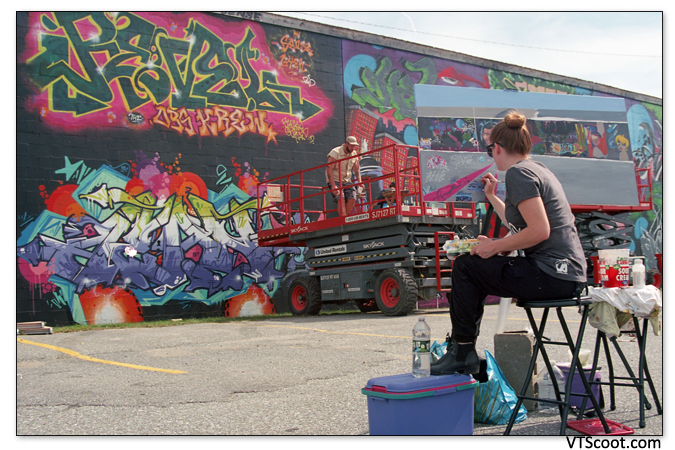
Legally speaking, if a person is out in public, they are accessible to the public. They are not protected by any rights of property. People can walk up to them in the street and ask for money, or directions, or to tell them about the good news of the lord and savior Jesus Christ, and you can take their picture. If they go into a restaurant, and you see them through the window, you can take their picture. If you walk into that restaurant to take their picture… well now you’ve entered into private property, and you cannot take their picture without permission. Now, plenty of people on the street might very well come up to you, demanding that you delete your entire roll of film because your taking their photo violates some imaginary law that they just made up, but a person cannot expect privacy in a public place. You may not approve of it, but that’s just the reality we live with.
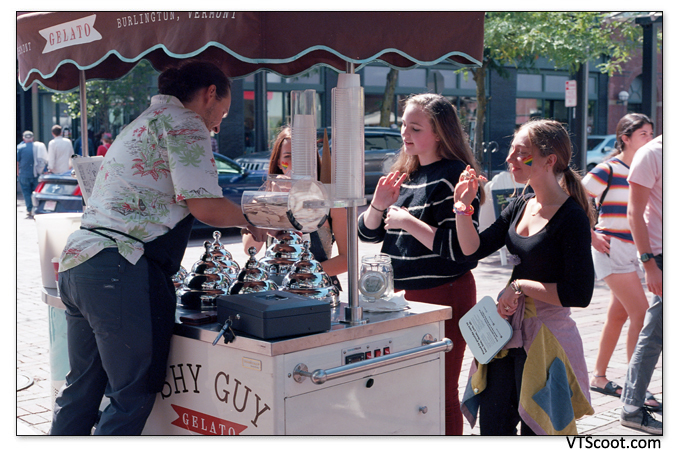
Now, whether or not it’s legal is not something that should concern you as much as how you approach it. If someone comes up and wags their finger at you telling you that you violated their right to public privacy I don’t think you need to push the issue, or explain the law to the offended party. Just apologize, angry people are going to happen. I was once threatened by a strange guy in the park because I took photos of a protest, I just mollified him as best I could and walked away from the situation. It all ended with a handshake instead of a broken camera and fractured jaw. Nobody cares if you get the last word, they just want their grievance to be understood, right or wrong, and if you give them that satisfaction the encounter will almost always end well. However, just for your own sanity, I’ll assure you that you are not breaking any rules by taking people’s pictures.
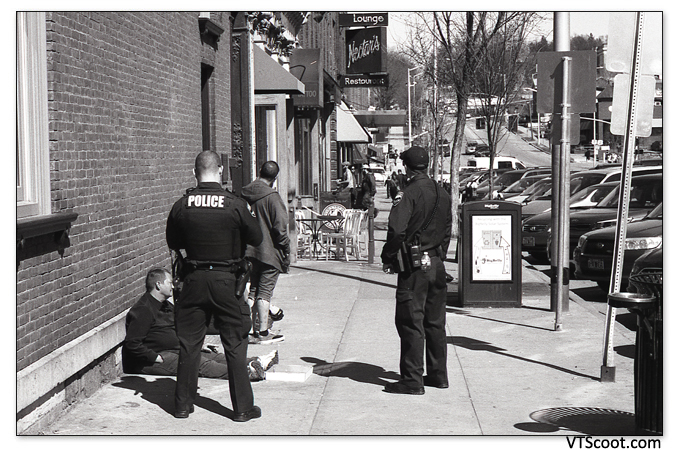
Unless, of course, you’re going to use their image to sell a commercial product or service. In those instances you do in fact need waivers to be signed. You can’t just hijack someone to be your product spokesperson against their will. Pay a model. Models are pros and they need to pay their bills.
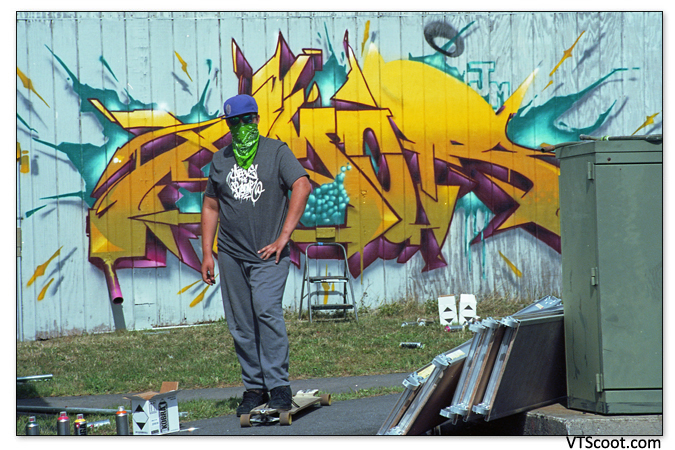
There are, however, some guidelines you should probably follow. First and foremost, don’t be a creep. People are going to be suspicious of anyone with a camera, especially if the photographer is male. Not because you are being persecuted for your maleness that you have no control over and therefore these people are being sexist, no, it’s because a lot of dudes are just complete creeps! I mean that guy across the street in a raincoat with a long lens on a camera who is avidly photographing you and your children play in the park, your thoughts are immediately going to be “Ew! Creeper!” So I would advise against a long telephoto lens shooting from a distance like a sneak, it sets the wrong tone. Also, maybe 86 the raincoat too, raincoats and windowless vans are not a good look if you want to be a non-creep.
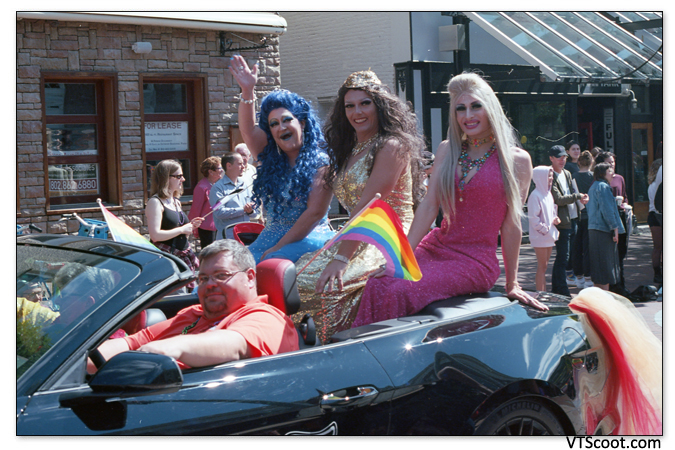
There are plenty of times where I will ask people if I can take their picture, and almost every time they said “yes” but here’s the problem – now they’re stopping what they were doing and are looking at the camera, potentially smiling and even striking a pose. Sometimes that’s what I want, but usually I’m trying to capture a moment that’s happening as though the camera wasn’t even part of the story. If the activity stops and suddenly everyone is looking directly at the camera, well I might as well not even push the button. There’s no picture here.
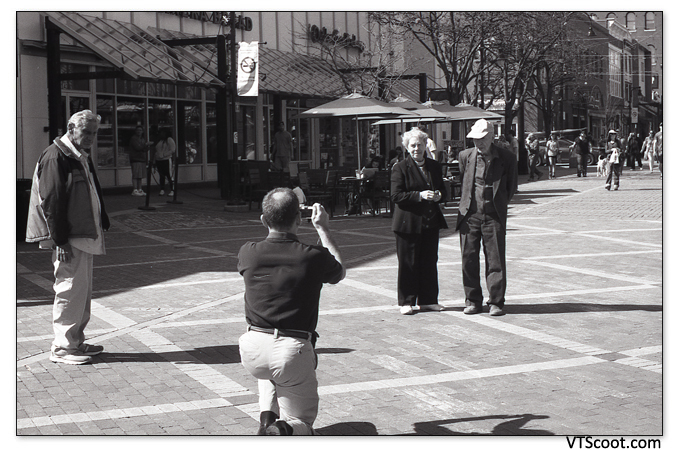
One favorite piece of misdirection I like to use goes like this: Have you ever had someone on the street wave at you, and even though you’re puzzled as to why this weirdo in a raincoat is waving but you wave back, only to discover that he was waving at the person behind you? Apply that to a street photo scene. Before I put the camera to my eye I might look two or three feet to the subject’s left, point and shoot the subject, then continue looking to their left. As far as they are concerned I just shot a photo of something behind them. I’ve found this is a good way to alleviate a confrontation, but what if a conflict happens anyway?
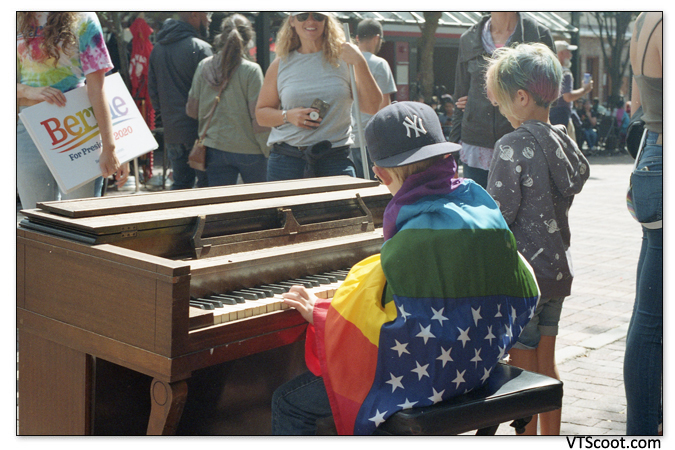
Conflicts might very well happen. People might feel put off by a stranger shooting their picture while they’re out getting coffee and a giant warm pretzel. What do you do? I find that the best solution is to be upfront and honest, and above all, not to meet confrontation with confrontation of your own. Don’t lay on them the old “This is not illegal, the law says I can do this, and do ths I shall” because that’s kind of a douchey tack to take, and it just elevates the confrontation. Nine times out of ten the very first thing they’re going to say is “Why are you taking my picture?” They don’t know you, are you a pervert? A private detective? Someone looking to set up a fake Tinder account? When they ask that, just tell them. “I’m a hobby photographer, doing some street photography.” If you have an Instagram or some other photo platform account, have business cards made up and hand them one. You can really easily defuse the situation by proving you’re an artist, not a creeper. If they say “That’s all well and good, but I don’t want my picture taken” it’s best just to apologize and comply. Nobody wants to be the bad guy, so many times just the act of saying “sorry” will make the difference. You recognized the subject is a person, they’ll appreciate it. If they want to keep arguing that’s on them, just move on.
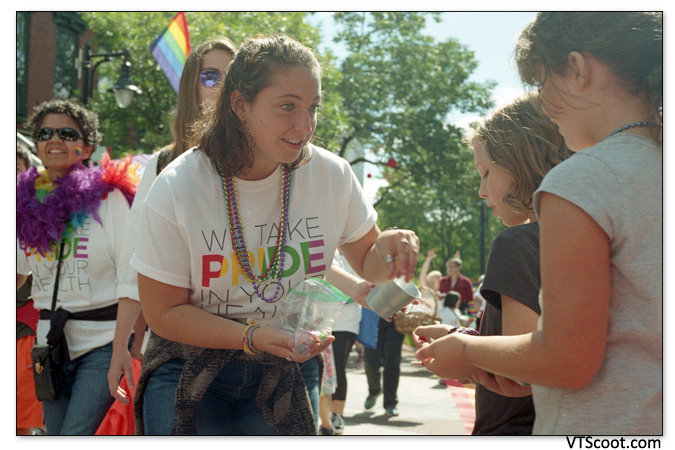
Another common recommendation is to become “invisible.” Be inconspicuous. Blend into the background. You’re trying not to be noticed, because once you’re noticed that organic scene you were looking to capture becomes less organic. They’re aware of a camera, they will act differently, and they will probably look at the camera. To this end, dress casually, like a normal tourist or someone on break from work, and small cameras are best. Rangefinders are usually what’s recommended because they are smaller, and almost silent. Think of yourself as a detective, trying to casually photograph a person doing a naughty without them knowing. Of course, you’re not doing this from a safe and hidden distance, you’ve probably got a 40 or 50mm lens, you’re going to be within a few feet, so the pressure is on! I have a couple of older twin-lens reflex cameras and a folding camera from the 1930s, when I use those for street photography I have pretty good luck with people letting me take their picture, just because the cameras are so different from all the other phones and cameras out of the street. “Wow, how old is that camera?” “Not sure, between 70 and 90 years old I’d say.” “Cool. Does it work?” “Not sure, let’s find out! -click-” “Oh neat. Here’s my email address, send me a copy if it comes out?”
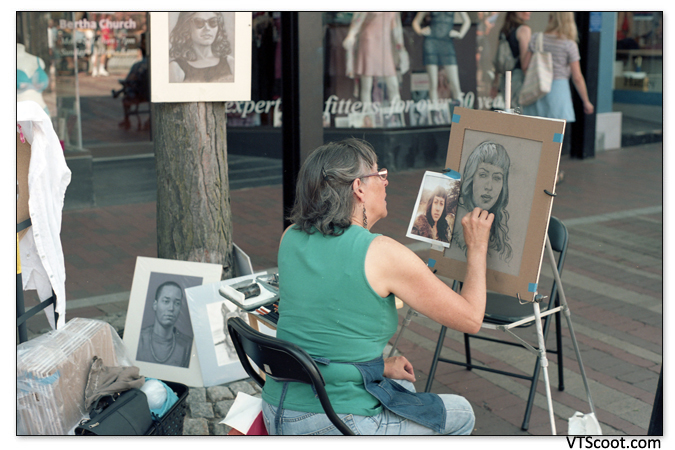
This bit might just be a Vermont thing. People are friendlier here, less suspicious and more neighborly. It’s true, though, that I took a stranger’s photo and they asked me to email them a copy. In one case I made a painting of the photo, and they bought the painting.
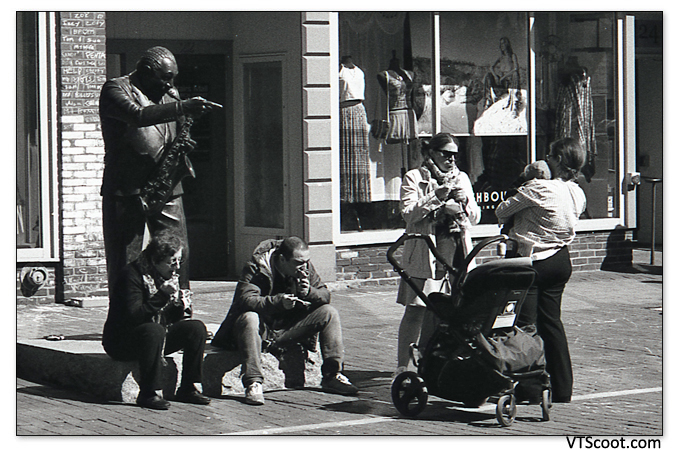
Another trick to consider is zone focusing, where you’re not even looking through the viewfinder, just shooting from the waist and focusing based on how far you think the subject is from you. I can’t tell you how many worthless photos I’ve gotten this way. Out of focus, poorly framed, and good color film costs stupid amounts lately, so I’m not the guy to talk to about that.
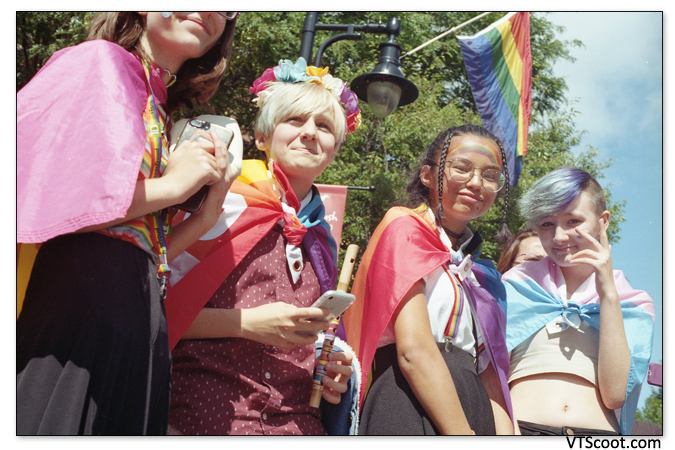
A great deal of my street photography is not the sneaky candid type stuff, I’ll often do some street shots with someone I’m having a conversation with. There’s a famous street shot by Diane Arbus called “Child With Toy Hand Grenade in Central Park,” shot in 1962 of a boy with an odd grimace on his face, arms tensed at his sides and holding a toy grenade. This was the result of several shots she took while she was chatting with the boy. She was walking around the park with him, engaged with him, and he was an active participant in the shoot, but the results were still organic, a boy just being a boy. Come to think of it I think most of Arbus’ street photography was done while engaged with the subjects. Some of my favorite personal streets shots were achieved while I was actively engaged with strangers. You’ll either catch them in a moment, or you’ll just spontaneously say “Hey! Quick! Do something showy!” and see what they do. This can be a really fun way to do street shots, but it still requires you to be able to be comfortable engaging with strangers.
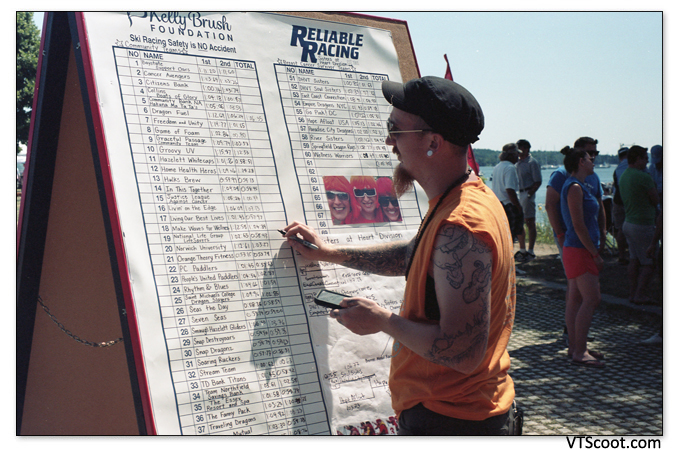
However you choose to approach this somewhat controversial medium, it’s worth experimenting with. Just like how landscape photography and wildlife photography puts you in touch with nature, street photography puts you in touch with humanity.
